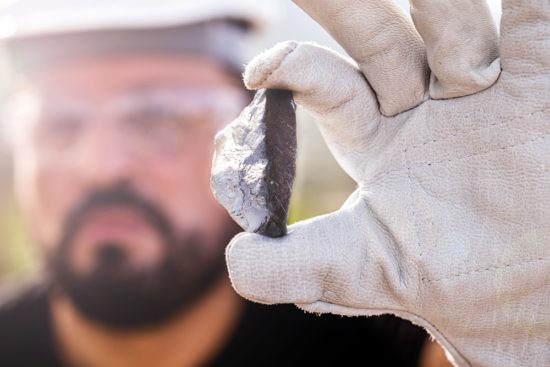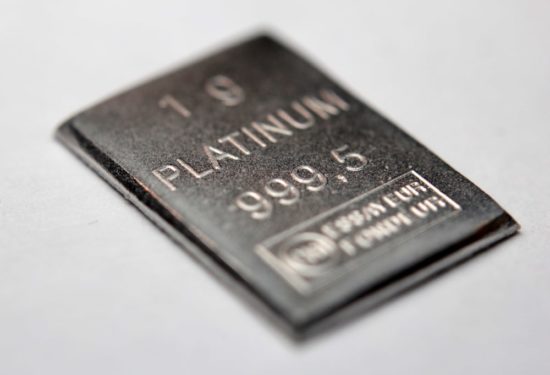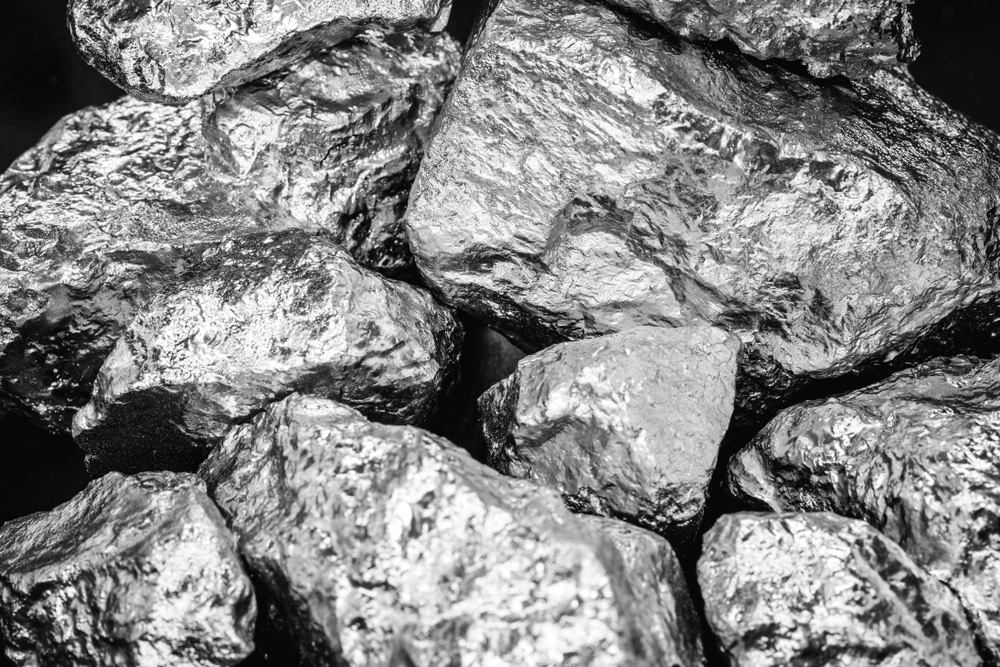Palladium was discovered by William Hyde Wollaston in 1803. The element was named by Wollaston in 1804 after the asteroid Pallas, which was discovered two years earlier. Wollaston found palladium in crude platinum ore for South America by dissolving the ore aqua regia, neutralizing the solution with sodium hydroxide, and precipitating platinum as ammonium chloroplatinate with ammonium chloride. He added mercuric cyanide to form the compound palladium cyanide, which was heated to extract palladium metal.
Palladium chloride was at one time prescribed as a tuberculosis treatment at the rate of 0.065g per day (approximately one milligram per kilogram of body weight). This treatment did have many negative side-effects and was later replaced by more effective drugs. Palladium’s affinity for hydrogen led it to play an essential role in the Fleischmann-Pons experiment in 1989, also known as cold fusion.
In the run-up to 2000, the Russian supply of palladium to the global market was repeatedly delayed and disrupted because the export quota was not granted on time, due to political reasons. The ensuing market panic buying drove the palladium price to an all-time high of $110 per ounce, reached in January 2001. During the time period, Ford Motor Company, in fear of auto vehicle production disruption due to a possible palladium shortage, stockpiled large amounts of the metal, purchased near the price high. As prices subsequently fell in early 2001, Ford lost nearly $1 billion U.S. dollars.
World demand for palladium increased from 100 tons in 1990 to nearly 300 tons in 2000. The global production from mines was 222 metric tons in 2006 according to USGS data. Most palladium is used for catalytic converters in the automobile industry.
Occurrence
In 2005, Russia was the top producer of palladium with at least a 50% world share followed by South Africa, the USA, and Canada, reports the British Geological Survey.
Palladium is found as a free metal and alloyed with platinum and gold with platinum group metals in placer deposits of the Ural Mountains, Australia, Ethiopia, South, and North America. It is commercially produced from nickel-copper deposits found in South Africa, Ontario, and Siberia: the huge volume of ore processed makes this extraction profitable despite the low proportion of palladium in these ores. The world’s largest single producer of palladium is MMC Norilsk Nickel produced from the Norilsk-Talnakh nickel deposits. The Merensky Reef of the Bushveld Igneous Complex of South Africa contains significant palladium in addition to other platinum group elements. The Stillwater igneous complex of Montana also contained mineable palladium.
Palladium is also produced in nuclear fission reactors and can be extracted from spent nuclear fuel, although the quantity produced is insignificant. Palladium is found in the rare minerals copperite and polarite.
Characteristics
Palladium is a soft silver-white metal that resembles platinum. It is the least dense and has the lowest melting point of the platinum group metals. It is soft and ductile when annealed and greatly increases its strength and hardness when it is cold-worked. Palladium is chemically attacked by sulfuric, nitric, and hydrochloric acid in which it dissolves slowly. This metal also does not react with oxygen at normal temperatures (and thus does not tarnish in the air). Palladium heated to 800 celsius will produce a layer of palladium (II) oxide (PdO). It lightly tarnishes in the moist atmosphere containing sulfur.
This metal has the uncommon ability to absorb up to 900 times its own volume of hydrogen at room temperatures. It is thought that this possibly forms palladium hydride (PdH2) but it is not yet clear if this is a true chemical compound.
Common oxidation states of palladium are 0, +1, +2 and +4. Although originally +3 was thought of as one of the fundamental oxidation states of palladium, there is no evidence for palladium occurring in the +3 oxidation state. This has been investigated via x-ray diffraction for a number of compounds, indicating a dimer of palladium (II) and palladium (IV) instead. Recently, compounds with oxidation states of +6 were synthesized.
Isotopes
Naturally-occurring palladium is composed of six isotopes. The most stable radioisotopes are 107 Pd with a half-life of 6.5 million years, 103 Pd with a half-life of 17 days, and 100 Pd with a half-life of 3.63 days. Eighteen other radioisotopes have been characterized with atomic weights ranging from 92.936 u (93 Pd) to 119.924 u (120 Pd). Most of these have half-lives that are less than a half-hour, except 101 Pd (half-life: 8.47 hours), 109 Pd (half-life: 13.7 hours), and 112 Pd (half-life: 21 hours).
The primary decay mode before the most abundant stable isotope, 106 Pd, is electron capture, and the primary mode after is beta decay. The primary decay product before 106 PD is rhodium and the primary product after is silver.
Radiogenic 107 Ag is a decay product of 107 Pd and was first discovered in the Santa Clara, California meteorite of 1978. The discoverers suggest that the coalescence and differentiation of iron-cored small planets may have occurred 10 million years after a nucleosynthetic event. 107 Pd versus Ag correlations observed in bodies, which have clearly been melted since the accretion of the solar system, must reflect the presence of short-lived nuclides in the early solar system.

Because it adsorbs hydrogen, palladium was a key component of the controversial cold fusion experiments of the late 1980s.
Applications
Palladium is used in dentistry, watchmaking, in aircraft spark plugs, and in the production of surgical instruments and electrical contacts. Palladium is also used to make professional transverse flutes.
Electronics
The biggest application of palladium in electronics is making the multilayer ceramic capacitor. It is also used in the plating of electronic components and in soldering materials. The electronic sector consumed 1.07 million troy ounces of palladium in 2006.
Technology
Hydrogen easily diffuses through heated palladium: thus, it provides a means of purifying the gas. Membrane reactors with Pd membranes are therefore used for the production of hydrogen. Reactions for the production of hydrogen can be palladium (and palladium-silver alloys) are used as electrodes in ceramic capacitors. Palladium (sometimes alloyed with nickel) is used in connector platings in consumer electronics. It is part of the palladium-hydrogen electrode in electrochemical studies. Palladium (II) chloride can absorb large amounts of carbon monoxide gas and is used in carbon monoxide detectors.
Catalysis
When it is finely divided, such as in palladium on carbon, palladium forms a good catalyst and is used to speed up hydrogenation and dehydrogenation reactions, as well as in petroleum cracking. A large number of carbon-carbon bond forming reactions in organic chemistry (such as the Heck and Suzuki coupling) are facilitated by catalysis with palladium compounds. The largest use of palladium today is in catalytic converters. Pd is also a versatile metal for homogeneous catalysis. It is used in combination with a broad variety of ligands for highly selective chemical transformations.
Hydrogen Storage
Palladium hydride is metallic palladium that contains a substantial quantity of hydrogen within its crystal lattice. At room temperature and atmospheric pressure, palladium can absorb up to 900 times its own volume of hydrogen in a reversible process. This property has been investigated because hydrogen storage is of such interest and a better understanding of what happens at the molecular level could give clues due to the cost of the metal.
Jewelry
Palladium has occasionally been used as a precious metal in jewelry, as a replacement for platinum or white gold. This is due to its naturally white properties giving it no need for rhodium plating. It is slightly white, much lighter, and about 12% harder. Similar to gold, palladium can be beaten into a thin leaf form as thin as 100 nm (1/250,000 in). Like platinum, it will develop a hazy patina over time. Unlike platinum, however, palladium will discolor at soldering temperatures, become brittle with repeated heating and cooling, and react with strong acids.
It can also be used as a substitute for nickel when making white gold. Palladium is one of three most-used metals that can be alloyed with gold to produce white gold. (Nickel and silver can also be used.) Palladium-gold is a much more expensive alloy than nickel-gold but is hypoallergenic and holds its white color better.
When platinum was declared a strategic government resource during World War II, many jewelry bands were made out of palladium. As recently as September 2001, palladium was more expensive than platinum and rarely used in jewelry also due to the technical obstacle of casting. However the casting problem has been resolved, and its use in jewelry has increased because of a large spike in the price of platinum and a drop in the price of palladium.
Prior to 2004, the principal use of palladium in jewelry was as an alloy of gold in the manufacture of white gold jewelry, but, beginning early in 2004 when gold and platinum prices began to rise steeply, Chinese jewelers began fabricating significant volumes of palladium jewelry. In 2004 with the introduction of palladium jewelry in China, demand for palladium for jewelry fabrication was 920,00 ounces, or approximately 14% of the total palladium demand for 2004, an increase of almost 700,000 ounces from 2003. This growth continued during 2005, with estimated worldwide jewelry demand for palladium of about 1.4 million ounces, or almost 21% of net palladium supply, again with most of the demand centered in China.
Industrial
Palladium in the periodic table also has uses that are only now being researched - some scientists are looking into it as a component in fuel cell technology, while others are exploring the use of palladium to treat prostate and breast cancer. In the future, the metal could even be used to remove toxins and carcinogens from groundwater.
Palladium is used to create catalytic converters for automobiles and other machines that have engines to reduce carbon dioxide. These converters transform toxic substances in engine exhaust to nontoxic or less harmful elements, helping cars adhere to environmental standards. While other catalyst types exist, those made from palladium that is a new metal are among the cheapest and most effective.
Electronics such as cellphones and laptops, which use multilayer ceramic capacitors, also contain palladium. Capacitors help control the electric current flowing through these devices by storing a charge until it’s necessary. However, the current high cost of palladium means that many capacitors are made with nickel instead.
In addition to those uses, palladium is very important in industrial chemistry, where it is used in the production of chemicals like purified terephthalic acid, a component of artificial fibers like polyester and nitric acid for fertilizer. Using palladium as a catalyst in chemical reactions has changed how synthesis occurs in the pharmaceutical and biotechnology industries and has altered the chemical industry’s manufacturing processes.
Oil Refining
In some ways, palladium’s fortune is directly tied to that of the petroleum industry. That’s because the metal, along with other platinum-group elements (PGMs), is used as a catalyst in many refining processes, including catalytic reforming and hydroprocessing.
Catalytic reforming creates high-octane gasoline that is used for powering cars. In that process, catalytic reactors on an alumina base interact with gasoline feedstock to create the right type of gasoline.
Hydroprocessing involves improving the quality of oil and gas products by adding hydrogen atoms to molecules without breaking them. Interestingly, hydroprocessing can also involve breaking molecules into smaller parts. The catalysts in this process include palladium and other PGMs.
Medical And Dentistry
Gold alloys containing platinum have long been used in dentistry to make dental inlays, crowns, and bridges. However, rising gold prices made palladium a popular option in the 1980s. Currently, Japan’s government mandates that dental alloys include at least 20 percent palladium; as a result, the country consumes the most palladium for dental uses.
As palladium is nontoxic and is not antagonistic toward the human body, it also has medical applications. Currently, scientists are looking at using small pellets of palladium, a radioactive isotope of the element, to combat prostate and breast cancer. The procedure, in which small seeds of palladium are injected into the affected area, is cal brachytherapy. It involves delivering local doses of radiation over a period of time, rather than applying high levels of general radiation to the body all at once. Brachytherapy for prostate cancer has been found just as effective as other treatment options in the early stages of the disease; it also brings lower complication rates than surgery and external radiation. The long-term disease-free survival rate is 90 percent.
Water Purification
Another new technique under examination is the use of palladium to remove halogenated volatile organic compounds from groundwater. Volatile organic compounds are very common - they’re used for dry cleaning, degreasing, and more - however when they leach into aquifers and make it into groundwater, they act as contaminants. The removal technique being examined involves using palladium as a catalyst, similar to the process used by catalytic converters in automobiles and helps make water safer.

Of all the naturally white metals, platinum is the densest while palladium is the least.
What Are The Differences Between Palladium And Platinum?
Even though platinum and palladium are from the same family of metals and they have some similar features, they are also quite different.
Palladium is considered one of the rarest precious metals on the planet. It is less abundant than platinum, which is already rarer than silver and gold. So those who are interested in owning something that is hard to come by should consider palladium.
Like platinum and other metals, the price of palladium could fluctuate as a result of supply and demand. Typically, however, palladium is more affordable than platinum, despite its rarity. This could be due to the fact that platinum is denser and therefore a better option for some manufacturers. But this is good news for investors who want to get into the precious metals market for the first time, as they may find palladium the most affordable option.
In terms of industrial use, platinum and palladium could be used in similar ways. These metals could be utilized by the auto industry to dispel emissions, particularly when it comes to the production of catalytic converters, and both palladium and platinum could also be valuable assets to jewelry designers who want to fulfill the demand for durable yet beautiful pieces of jewelry, such as engagement rings and wedding bands. But palladium is gaining in popularity and may even be able to replace platinum in certain settings because it is more affordable, at least for now. Demand is high for palladium in the electronics sector, as well as the world of dentistry, too.
Where Is Palladium Found Around The World?
Although the majority of this rare precious metal comes from South Africa and Russia, as well as the United States and Canada, it could also be found in South America, Ethiopia, the Ural Mountains, and Australia. Palladium production from recycled sources is another way of gaining access to this metal, in addition to the supplies from mines.
It’s worth noting that when the price of a precious metal like platinum rises too high for its manufacturing uses, industries are forced to look for cheaper alternatives, such as palladium, thereby leading to new innovations. However, comparatively less stable governments in primary export markets could contribute to price gains and losses in the palladium market as well.
Conclusion
Miners extract palladium from the natural environment from a few places around the world. Palladium could be found in polarite and copperite minerals, as well as with other PGMs in placer deposits that are within rocks like chromite, norite, and dunite. And palladium, like other PGMs, could also be extracted as a byproduct of copper and nickel.
Mechanical extraction methods could be used to mine palladium as a means to make the process easier. And ores that contain palladium could be mined, crushed, and then immersed into water that contains a reagent, in a process that is referred to as froth flotation.




